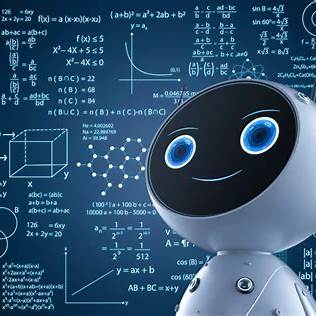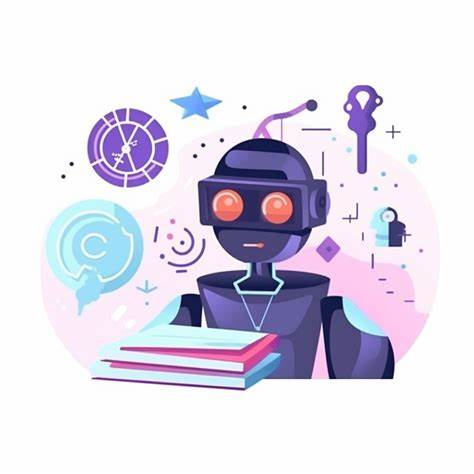Home > Edu-Tech > The Importance of AI in Mathematics Education.
The Importance of AI in Mathematics Education.
Artificial Intelligence is drastically changing the narrative of mathematics difficulty by simplifying complex concepts and predicting learners' performance.
By :Thomas Inyang🕒 19 Feb 2025

Mathematics has long been difficult for both students and educators, with ideas like calculus or algebra sometimes leaving students frustrated and teachers scrambling for solutions. But what if algorithms could adapt to the teachings of individual needs or immediately identify gaps in understanding?
With artificial intelligence (AI), a technology that has the potential to transform education through adaptive learning systems, intelligent tutoring, and data-driven insights, this is possible.
In this article, we'll look at
- How AI can personalize math instruction, increase student engagement, and provide teachers with actionable statistics. Whether you're calculating equations or creating lesson plans.
- How AI can improve math education.
Understanding the Role of AI in Mathematics Education
AI has progressed from being a catch-line to a transformative force in classrooms, particularly in mathematics education. But how does it work?
AI-powered arithmetic tools function as 24-hour virtual instructors, adapting to each student's learning rate and style. For example, platforms such as WolframAlpha employ intelligent teaching tools to analyze problem-solving stages in real-time. For teachers or learners with pure and abstract mathematical equations challenges, the WolframAlpha can Identify input errors, provide hints and alternative solutions, and also give shorter practice problems to overcome knowledge gaps.
Machine learning is where AI shines brightest for instructors. These algorithms analyze large volumes of student performance data to detect trends, such as class-wide trouble with mathematical concepts. Teachers can carefully make changes in teaching and learning structure by leveraging the insights of the learner's previous assessment (assignments and tests).
What are the Benefits of AI-Powered Learning in Mathematics?
What Are the Advantages of AI-Assisted Learning in Mathematics?
- Personalized Learning Paths All: AI adaptive learning systems analyze real-time student performance to build customized curricula. For example, platforms such as DreamBox modify not only the level of tasks (e.g., algebra vs. geometry) but also the format (switching between visual puzzles and mathematical drills) based on how a student learns best. Stanford research demonstrates that such tailoring can reduce learning gaps by up to 40%.
- Real-Time Feedback and Progress Tracking: The practice of waiting days for evaluated papers is out of date. AI evaluation systems, such as Photomath's step-checker, scan handwritten responses in seconds, identify errors, and explain why a step is incorrect. This immediacy allows students to clarify mistakes before they solidify, transforming "I don't get it" into "Aha!" moments.
- Boosting Performance with Tailored Resources:
See Also: How to Draw DDA Line with Python
AI doesn’t just point out mistakes, it also offers solutions. Whether it’s recommending additional practice problems or suggesting video tutorials, AI ensures students have the resources they need to succeed.
The Challenges and Considerations in Implementing AI.
The challenges and considerations of implementing AI. While AI has the potential to transform math instruction, its implementation faces challenges ranging from budget deficits to ethical uncertainties. Here's how schools might address these challenges:
1. Cost and Accessibility: Bridging the Equity Gap.
High-quality AI technologies frequently have high membership prices, making them unaffordable for underfunded schools. However, online platforms such as Khan Academy and EduAI now give AI-powered math practice web applications, and NGOs such as Digital Promise provide funds to low-income regions to develop adaptive learning solutions.
2. Privacy: Protecting Student Data.
These AI tools capture sensitive data (personal), such as quiz results and time spent on mathematical problems and as such, schools must ensure that the technologies to be used come with end-to-end encryption and adherence to privacy legislation.
3. Overcoming Resistance to Change.
Many teachers worry AI could devalue their expertise—a valid concern in an era of automated grading. Yet tools like ASSISTments and Mathspace are designed to augment teaching, not replace it. For instance, AI-generated analytics (insights) help teachers identify which students need 1:1 support, while Professional Development (PD) programs like Google’s AI Educator Certification can build confidence in using these tools.
These are core challenges faced in the implementation of AI in mathematics education.
What are the Practical Applications of AI in Math Classrooms?
The following are practical applications of AI in math classrooms
- Adaptive Learning Platforms: Tools like MATHia adjust problem difficulty and format (e.g., visual puzzles) based on student performance, reducing learning gaps by 40% (Stanford, 2023).
- Gamified Engagement: Apps like Prodigy and DragonBox boost practice time by 30% through quests and puzzles.

- Teacher Support: Gradescope cuts grading time by 70% and highlights class-wide struggles (e.g., 50% errors on fractions).
- Accessibility: AI tools like Help Me See assist visually impaired students with real-time problem narration.
- Predictive Analytics: Systems like Anthology flag at-risk students early, improving retention by 15%.
When you want to start small, use free tools like Khan Academy or partner with edtech grants for equity.
You can also try any of the above that best fits your preference with AI and mathematics education
Conclusion
In conclusion, AI is reshaping math education by offering tailored learning experiences, dynamic engagement, and measurable improvements in student outcomes. Adaptive platforms adjust to individual learning paces, while interactive tools like AI-driven games turn abstract concepts into tangible challenges—demonstrating technology’s potential to bridge gaps in understanding.
Though challenges such as equal access, implementation costs, and data privacy require thoughtful consideration, the transformative advantages of AI—including real-time feedback, reduced teacher workload, and data-driven insights—position it as a pivotal ally in modern education.
For educators and learners, adopting AI tools represents not just an innovation but an opportunity to elevate pedagogical strategies and foster deeper mathematical literacy.
As the field evolves, stakeholders must balance enthusiasm with critical evaluation, ensuring tools align with curriculum goals and ethical standards.
To start, explore platforms that emphasize collaborative problem-solving or adaptive skill-building, integrating them gradually to assess their impact.
By approaching AI with both curiosity and discernment, the educational community can harness its power responsibly and reimagine what’s possible in math classrooms.
Please Share